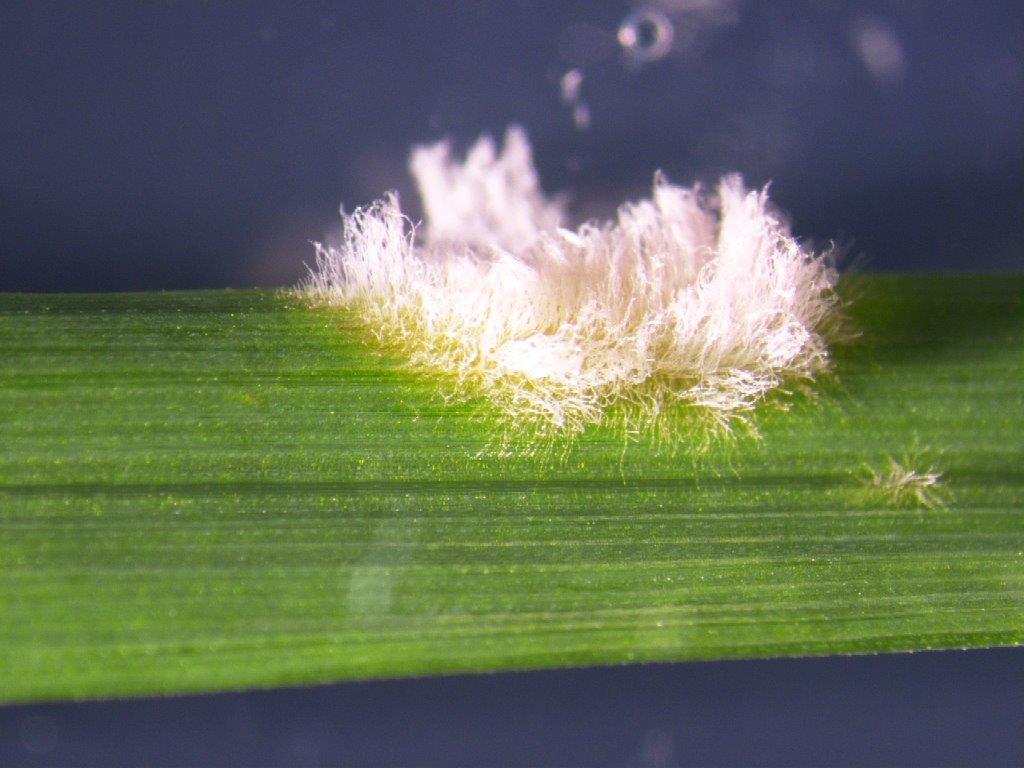Media Release issued by the Grains Research and Development Corporation (GRDC)
Growers who observe powdery mildew on barley varieties rated ‘resistant’ are urged to contact the Centre for Crop and Disease Management (CCDM) at Curtin University to arrange to send samples for analysis.
Barley powdery mildew is one of Western Australia’s major cereal diseases and in recent years has developed resistance to older triazole (DMI) fungicides and evolved virulence on barley varieties with levels of resistance.
CCDM research, funded by the Grains Research and Development Corporation (GRDC) and the university, is helping to reduce barley crop losses from powdery mildew by achieving durable genetic resistance.
The centre’s powdery mildew team leader Simon Ellwood said that while his team edged closer to delivering the knowledge needed for barley varieties with stable resistance, growers should remain vigilant of outbreaks and continue to use integrated disease management strategies.
“A dry start to this year’s season has seen few reports of powdery mildew outbreaks to date, he said.
“However, prolonged periods of mild temperatures and humidity above 70 per cent are likely to increase mildew incidence.
“If growers do see mildew on varieties rated as resistant, we would be grateful if they could send them to us to analyse.
“At the CCDM we try to stay on top of disease resistance in all varieties, so if a variety shows it is breaking down in resistance, it’s important we confirm this and let the industry know.”
Resistance ratings research carried out last year by the CCDM team, in conjunction with Department of Agriculture and Food (DAFWA) field trials, confirmed that most barley varieties grown in WA are susceptible to powdery mildew.
“Given that barley powdery mildew has also developed resistance to older triazoles in recent years, selecting mildew resistant varieties is important in managing the disease, particularly in areas prone to it,” Dr Ellwood said.
There are several powdery mildew resistant barley varieties that can be placed in one of three categories.
“The first category includes recently introduced varieties such as Oxford and Flinders , and relies on resistance conferred by single major resistance genes, which might be expected to break down if grown over large areas for several years,” Dr Ellwood said.
“Varieties such as Dash , Buloke and Scope are in the second category which relies on combinations of major resistance genes, which is a more durable system than reliance on single resistance genes.
“The third category contains broad-spectrum resistance genes such as gene mlo-11. This gene has been widely deployed in barley in Europe and the USA for more than 40 years and provides resistance to all known pathotypes of mildew.”
Dr Ellwood said the third category was the most promising, and the varieties Grange and Westminster contained the mlo-11 gene.
“We hope to introduce similar genes into a larger range of varieties, increasing the choice of resistant varieties available to growers and ensuring robust resistance to powdery mildew,” he said.
Growers observing powdery mildew on varieties rated as resistant can contact Dr Ellwood at srellwood@gmail.com for instructions on how to send such samples.



